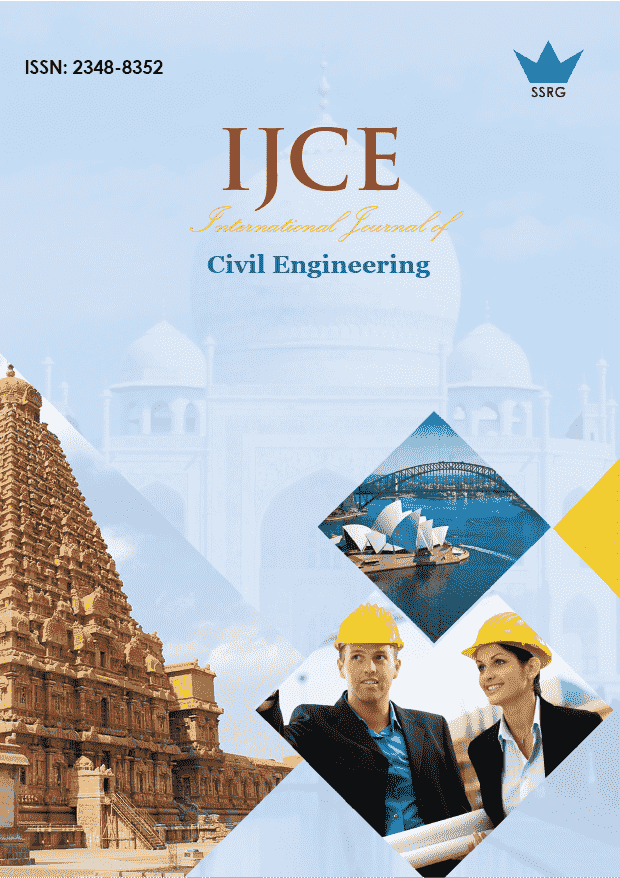Mix Use Traffic and Added Impedance Affecting Traffic Flow Variables

| International Journal of Civil Engineering |
| © 2019 by SSRG - IJCE Journal |
| Volume 6 Issue 3 |
| Year of Publication : 2019 |
| Authors : Sajid Azeem, Waheed Imran, Gauhar Amin |
How to Cite?
Sajid Azeem, Waheed Imran, Gauhar Amin, "Mix Use Traffic and Added Impedance Affecting Traffic Flow Variables," SSRG International Journal of Civil Engineering, vol. 6, no. 3, pp. 47-49, 2019. Crossref, https://doi.org/10.14445/23488352/IJCE-V6I3P107
Abstract:
Urbanization coupled with industrial and commercial boom has brought many challenges giving rise to heterogeneous traffic flow. Heavy vehicles result in congestion and speed drop with an ultimate increase in travel time and fuel wastage. The characterization of congestion is of vital importance to understand and manage heterogeneous traffic flow operations. To gauge the effect of bottlenecks compared with heavy vehicles on the speed and travel time of vehicles, a study has been undertaken. The different traffic scenarios were considered to answer the research question. Results showed that bottlenecks and heavy vehicles affect the average speed and travel time of the vehicles
Keywords:
Heterogeneous Traffic, Traffic Flow Variables, Speed Reduction, Heavy Vehicles, Bottlenecks
References:
[1] Moridpour S. Modelling heavy vehicle lane changing. Ph.D. Thesis, Monash University, Australia,(2010).
[2] Moridpour S, Rose G, Sarvi M. The effect of surrounding traffic characteristics on lane-changing behavior. Journal of Transportation Engineering,136(11),(2010),937–1055.
[3] Moridpour S, Sarvi M, Rose G. Lane was changing models: a critical review. Transportation Letters: The International. Journal of Transportation Research., 2(3),(2010),157–173.
[4] Al-kaisy AF, Hall FL, Reisman ES. Developing passenger car equivalents for heavy vehicles on freeways during queue discharge flow. Transportation Research “A”., 36(8), (2002),725–742.
[5] Uddin MS, Ardekani SA. An observational study of lane changing on basic freeway segment. Proceeding of the 81st Transportation Research Board Annual Meeting, Washington, D.C., (2002).
[6] Al-kaisy AF, Hall FL. Guidelines for estimating capacity at freeway reconstruction zones. Journal of Transportation Engineering; 129(5),(2003),572–577.
[7] Al-kaisy AF, Jung Y, Rakha H. Developing passenger car equivalency factors for heavy vehicles during congestion. Journal of Transportation Engineering.,131(7),(2005),514–523.
[8] FWA TF, Ang BW, Goh TN. Characteristics of truck traffic in Singapore. Journal of Advanced Transportation., 30(2), (2010),25–46.
[9] Moridpour S, Sarvi M, Rose G. Modeling the lane was changing execution of multi-class vehicles under heavy traffic conditions. Transportation Research Record. Journal of the Transportation Research Board., (2010),2161:11–19.
[10] Gurupackiam, S., & Jones, S. L., An empirical study of lane changing in urban streets under varying traffic conditions. Procedia-social and behavioral sciences, 16,(2011),259-269.
[11] Imran, W., et al., Impact of Heavy Vehicles of the Average speed and Average Travel Time of Light Vehicles. International Journal of Engineering Technology Research & Management, 02(09),(2018).
[12] Pothula sanyasi Naidu, Gundu Navya, Chukka Deepika, Mahesh Yamala, Capacity of Road with vechile Characteristics and Road Geometrics Interface Modelling, SSRG International Journal of Civil Engineering 2(10) (2015) 27-33.

 10.14445/23488352/IJCE-V6I3P107
10.14445/23488352/IJCE-V6I3P107